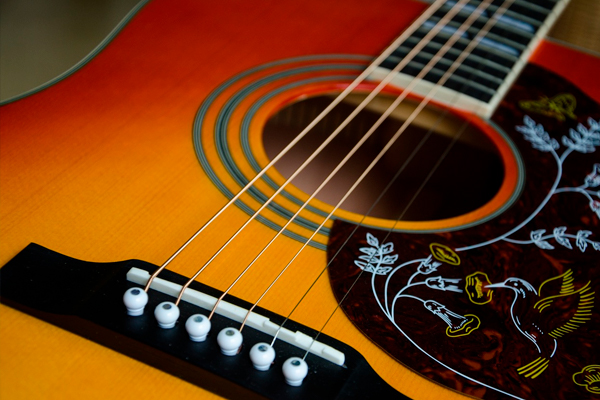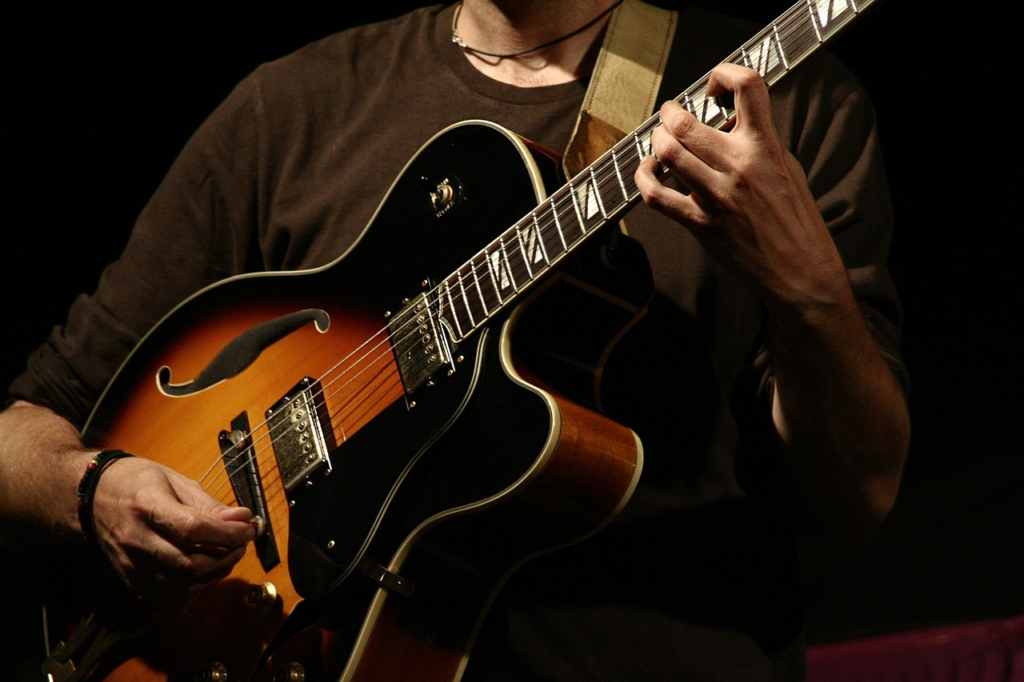
Seeking tranquility in your acoustic guitar sessions? Tired of the electric guitar’s noise? Learn ‘How to Make an Acoustic Guitar Quieter’ without sacrificing its exquisite tones. Whether you’re practicing in a serene space or playing late at night, this guide has you covered. Explore various methods, from altering your strumming technique to employing effective muting strategies. Discover how a simple change can bring a world of quiet melodies. Let’s embark on a journey to harmonious and serene guitar playing!
Table of Contents
Can I Make My Acoustic Guitar Quieter?

Image by venturaartist from Pixabay
Absolutely! There are several techniques and tools you can use to make your acoustic guitar quieter without compromising the guitar sound. By implementing these strategies, you can enjoy playing your guitar without worrying about the sound carrying too far.
You can confirm this advice on the website of “Tone Topics”, a well-known professional website for guitar enthusiasts. Another great source is a website Guitar Gear Finder, you can learn there about guitar strings.
How Do You Remove Noise from an Acoustic Guitar?
To remove noise from your acoustic guitar, you can explore the following options because guitars allow multiple variants of suppressing bass frequencies.
1.Practice in a Quiet Area:
Find a peaceful place to practice where external noise won’t interfere with your playing. This could be a secluded room, your backyard, or even a local park. Ensuring a quiet environment will naturally reduce the overall volume. Without the need to overpower other noises, your performing live will be quieter, the quiet environment will allow you to hear notes better and to move more air through the guitar.
2.Practice Guitar in Silence Without a Guitar:
If you want a completely silent practice session, you can try practicing without actually playing the guitar. It might sound strange, but visualizing your finger placements and strumming patterns can help improve your technique while keeping the volume down.
Or you can even use an unplugged electric guitar to imitate the strings but lower the volume of the sound on the audio interface. Another option is to use a guitar silencer or even loosely tying something around the neck of the guitar so it sits on the strings, muting the strings.
3.Use a Feedback Dampener:
A feedback dampener is a device that attaches to your acoustic guitar’s strings to dampen the noise and reduce unwanted vibrations. This is particularly useful if you’re playing live or using high-gain amplifiers and want to dampen the sound. It is often used with guitar amps because it doesn’t change the frequency, doesn’t resonate with other instruments when you play the guitar.
The important thing is to put it correctly on the fret, so it will muffle even heavy strings and significantly reduce the vibrations. You can also purchase a tool the covers the soundhole for sound to reduce. One unusual method is quietening your acoustic guitar by stuffing the soundhole while playing guitar. The sound coming from your guitar will be reduced greatly because of something filling the soundhole.
4.Consider Lighter Strings:
Using lighter gauge strings can reduce the volume of your acoustic guitar. Lighter strings require less tension, resulting in a quieter sound. Experimenting with different string gauges can help you find a balance between volume and tone, because thickness and density of the strings affect the noise. Change the strings if you want to radically lower the vibrations.
5.Try Palm Muting:
Palm muting involves lightly resting the palm of your hand on the strings close to the bridge while playing. This technique dampens the strings and reduces the volume, giving you more control over the sound. That way you can practice without disturbing anyone, even though you will still hear the music, because the sound waves are very near. Being able to hear the music that you are playing is crucial. You won’t be able to learn otherwise.
What Determines the Loudness of an Acoustic Guitar?

Image by sweetlouise from Pixabay
Several factors contribute to the overall volume of an acoustic guitar, no matter whether this is your best guitar or a cheap one:
1. Body Size: Larger-bodied guitars tend to produce more volume due to their increased resonance, and quietening your acoustic guitar if it is on the bigger side will be more difficult. Quiet acoustic guitars tend to be smaller.
2. String Vibration: The way your strings vibrate directly affects the guitar’s volume. Strumming harder will result in a louder sound, but you’ll still be able to strum quietly.
3. Soundhole Design: The size and placement of the soundhole impact the projection and the guitar’s sound. You should be careful while using a guitar with an unusual soundhole, rather than a normal acoustic guitar.
How to Make an Acoustic Guitar Quieter?
– Lower the action: Adjusting the height of your strings above the fretboard can help reduce the amount of volume.
– Use lighter gauge strings: Lighter strings require less tension, resulting in a quieter sound if you want to play the guitar late in the evening.
– Experiment with palm-muting: This technique can help control the volume and add a unique flavor to your playing style.
– Consider using a feedback dampener or an acoustic guitar silencer for live performances, so the strings on your acoustic guitar will be much quieter, while the dampener is on the body of the guitar.
– If playing late at night, try using a soundproof panda or placing a t-shirt or two inside the guitar’s body to absorb the sound.
Warnings:
– Be cautious when significantly reducing the volume of your guitar. It may affect the overall tone and projection.
– Avoid stuffing the soundhole with objects that could damage your guitar.
– Always ensure the structural integrity of your guitar while implementing any modifications.
Making your acoustic guitar quieter is possible with the right techniques and tools. By practicing in a quiet area, using lighter strings, and implementing techniques like palm muting, you can enjoy playing your acoustic guitar without disturbing others. Remember, finding the right balance between volume and tone is key. Happy strumming!






